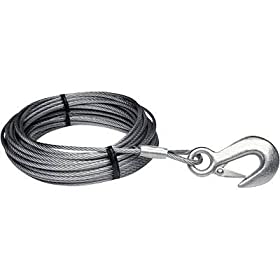scorchingice
Well-Known Member
Hello everyone. My name is Brian and I live in the Lafayette Indiana area (about 2 hours South of Chicago Illinois.
About me: I have been homebrewing for about a year. I started out making the normal extract ingredient kits purchased from Homebrewers Outpost. After 4 months or so I moved to the partial mash kits. I have not purchased the equipment for all grain so I have not tried those. I am certain that eventually I will want to try my hand at buying bulk ingredients and making my own creative beers.
My favorite style of beers are IPA, Nut Brown Ale, Honey Brown Lager, and sometimes a Cream Stout or Oatmeal Stout.
My living arrangements are that I live on a 1 acre lot near a lake with a lot of room to grow. We have a garden currently and I am wanting to start growing my own hops. I want to get started now as I know it takes about 3 seasons before you can use the hops for brewing. My plans are to build wooden poles with strings coming down to the ground for the plants to grow on. Similar to this image.

The last IPA kit I used had Centennial Hops and U.K. Northern Brewer (Northdown) (Site said this was supposed to be Magnum). From what I have read, Centennial and Horizon would be 2 that would fit this role well.
My question is, going by my beer style interest, What rhizomes would be good ones to start growing? How many of each rhizome will I need to get?
Should I try Centennial, Horizon, and a few others all at once? Should I stick to just the 2 types?
I will be purchasing the Rhizomes from www.midwestsupplies.com
Again this is my first time starting out so any suggestions would be greatly appreciated as I would like to go ahead and pre-order the Rhizomes now.
About me: I have been homebrewing for about a year. I started out making the normal extract ingredient kits purchased from Homebrewers Outpost. After 4 months or so I moved to the partial mash kits. I have not purchased the equipment for all grain so I have not tried those. I am certain that eventually I will want to try my hand at buying bulk ingredients and making my own creative beers.
My favorite style of beers are IPA, Nut Brown Ale, Honey Brown Lager, and sometimes a Cream Stout or Oatmeal Stout.
My living arrangements are that I live on a 1 acre lot near a lake with a lot of room to grow. We have a garden currently and I am wanting to start growing my own hops. I want to get started now as I know it takes about 3 seasons before you can use the hops for brewing. My plans are to build wooden poles with strings coming down to the ground for the plants to grow on. Similar to this image.

The last IPA kit I used had Centennial Hops and U.K. Northern Brewer (Northdown) (Site said this was supposed to be Magnum). From what I have read, Centennial and Horizon would be 2 that would fit this role well.
My question is, going by my beer style interest, What rhizomes would be good ones to start growing? How many of each rhizome will I need to get?
Should I try Centennial, Horizon, and a few others all at once? Should I stick to just the 2 types?
I will be purchasing the Rhizomes from www.midwestsupplies.com
Again this is my first time starting out so any suggestions would be greatly appreciated as I would like to go ahead and pre-order the Rhizomes now.









